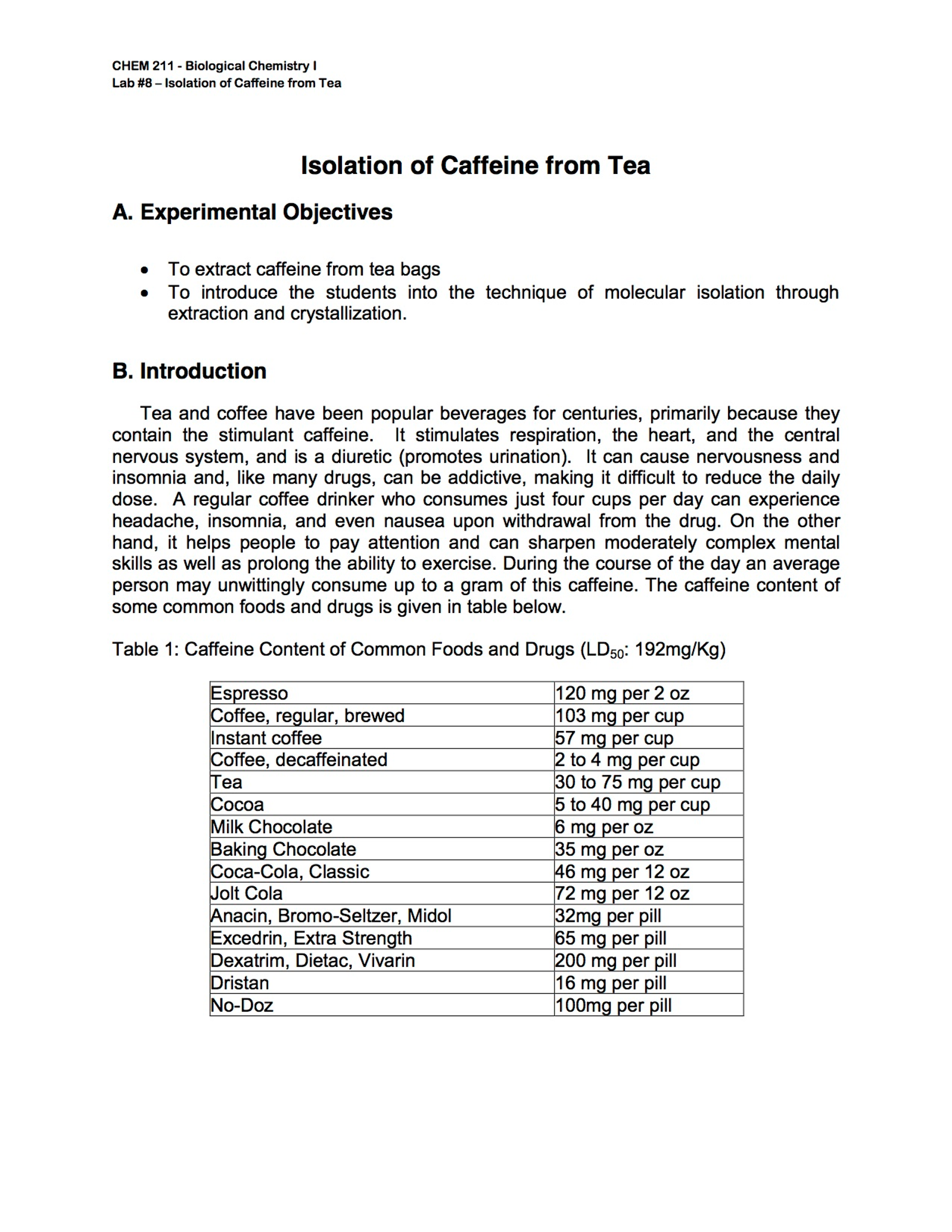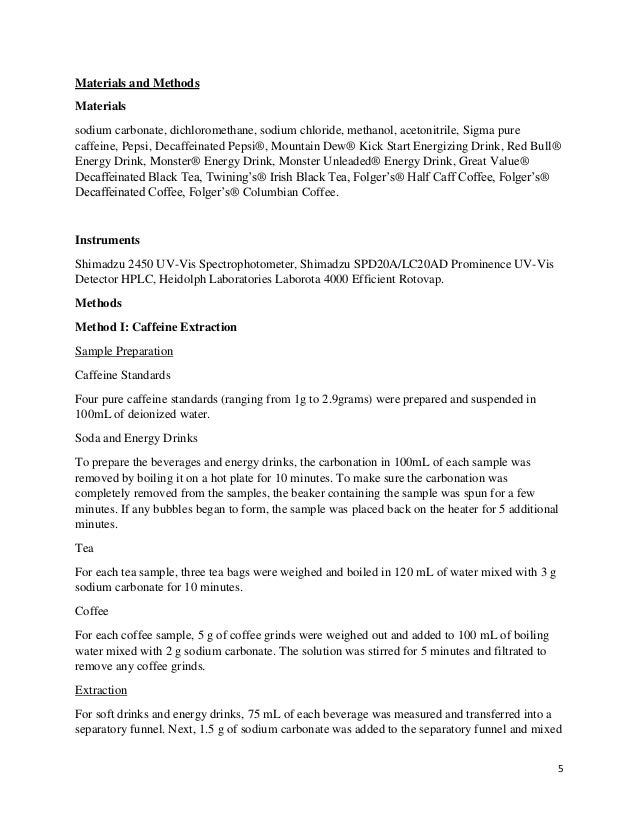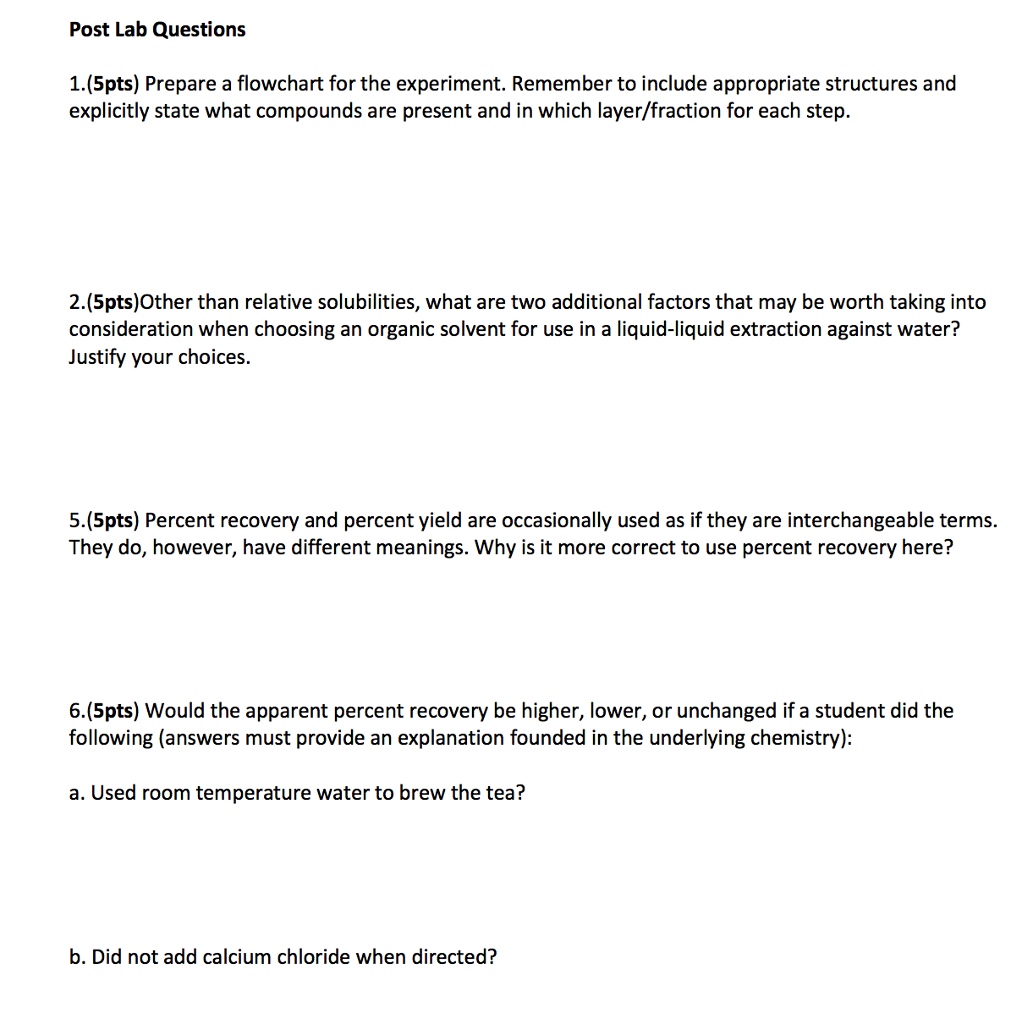Extraction Of Caffeine From Tea Lab Report

Anhydrous calcium chloride pellets were used to dry the solution and emulsion layer and the dcm was then decanted.
Extraction of caffeine from tea lab report. Sodium carbonate and hot water were added to the tea bags and was let to stand for about 7 minutes in order to bring the caffeine molecules out of the tea bags and into the aqueous solution. A pure product of 065 g caffeine was obtained. The mixture was then decanted to collect the residue. Then turn the stopcock away from body and open the stopcock to release.
This is essentially the same procedure used to decaffeinate drinks such as coffee and tea. The hot solution is allowed to cool and the caffeine is then extracted from the water with dichloromethane methylene chloride which is an organic solvent that is insoluble in water. The product that was collected after extraction still had many impurities. The solvents used in the experiment were an aqueous sodium carbonate and dichloromethane dcm.
From the solution caffeine was extracted using 60 ml dichloromethane. Once settled the solution separated into 2 layers. Put 15 ml of dichloromethane in the separatory funnel with coffee and tea solution. This gave calculated values of 59 1 recovery and 40 9 error.
The procedure was simply steeping the tea with very hot water for a few minutes which aided in extracting most of the caffeine. In this experiment a solid liquid extraction method was used first to extract the caffeine room the tea leaves tea bags to by dissolving sodium carbonate in hot water and creating an aqueous sodium carbonate solvent. The purpose of this experiment was to perform a liquid liquid extraction method to extract the caffeine from the tea bags that were provided and then recrystallize the caffeine. Caffeine was extracted from dried tea leaves using single extraction technique.
Extraction is a technique in which a solvent is used to remove and isolate a compound of interest from a liquid substance. Put 15 ml of coffee and tea solution in a separatory funnel 3. Caffeine lab 1 isolation of caffeine from tea in this experiment caffeine will be extracted from tea leaves where it is about 5 present using hot water. Procedure add about 10 0 g of tea leaves to around 100 ml of water in a 400 ml beaker cut open the tea.
Since caffeine is more soluble in dichloromethane 140 mg ml than it is in water 22 mg ml it readily dissolves in the dichloromethane. Then to prove that the extraction is mainly caffeine we can carry out two tests. An acid base liquid liquid extraction took place in order to force caffeine into the organic layer. After washing the anhydrous calcium chloride pellets with more dcm the solvent was evaporated leaving.
Lab report guide for column chromatography isolation of caffeine from tea lab experiment. A 50 ml beaker along with 2 boiling stones was weighed in advance with a total mass of 27 56 g during the extraction process. Due to the reaction pressure built up inside the funnel requiring the stopcock to be opened to release excess gas following each inversion. The purpose of this experiment was to isolate caffeine that is found in tea by.
Set a separatory funnel 2. Stopper the separatory funnel. Because caffeine is water soluble and is a base sodium carbonate must be added to the. Elizabeth pingnovember 22 20111 isolation of caffeine from tea introduction.
10 grams of leaves was boiled in a solution of anhydrous sodium carbonate and 100 ml distilled water. Interesting reminds me of a similar experiment at university where we extracted caffeine from. Caffeine can be extracted easily from tea bags. Caffeine was extracted from tea by the use of solid liquid and liquid liquid extractions.











































